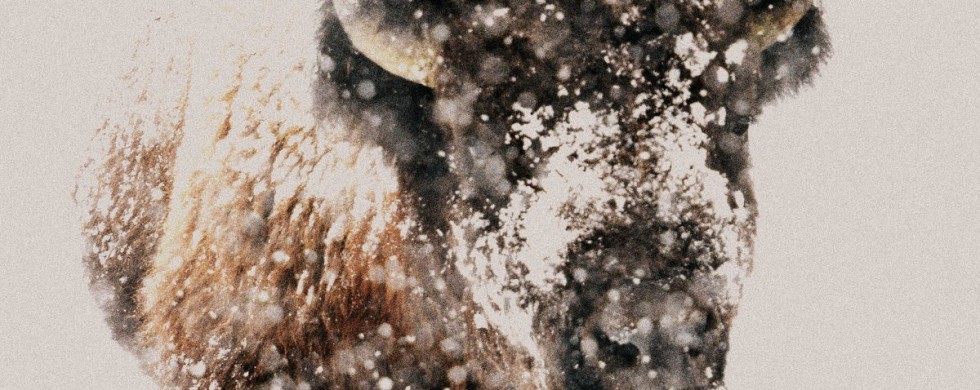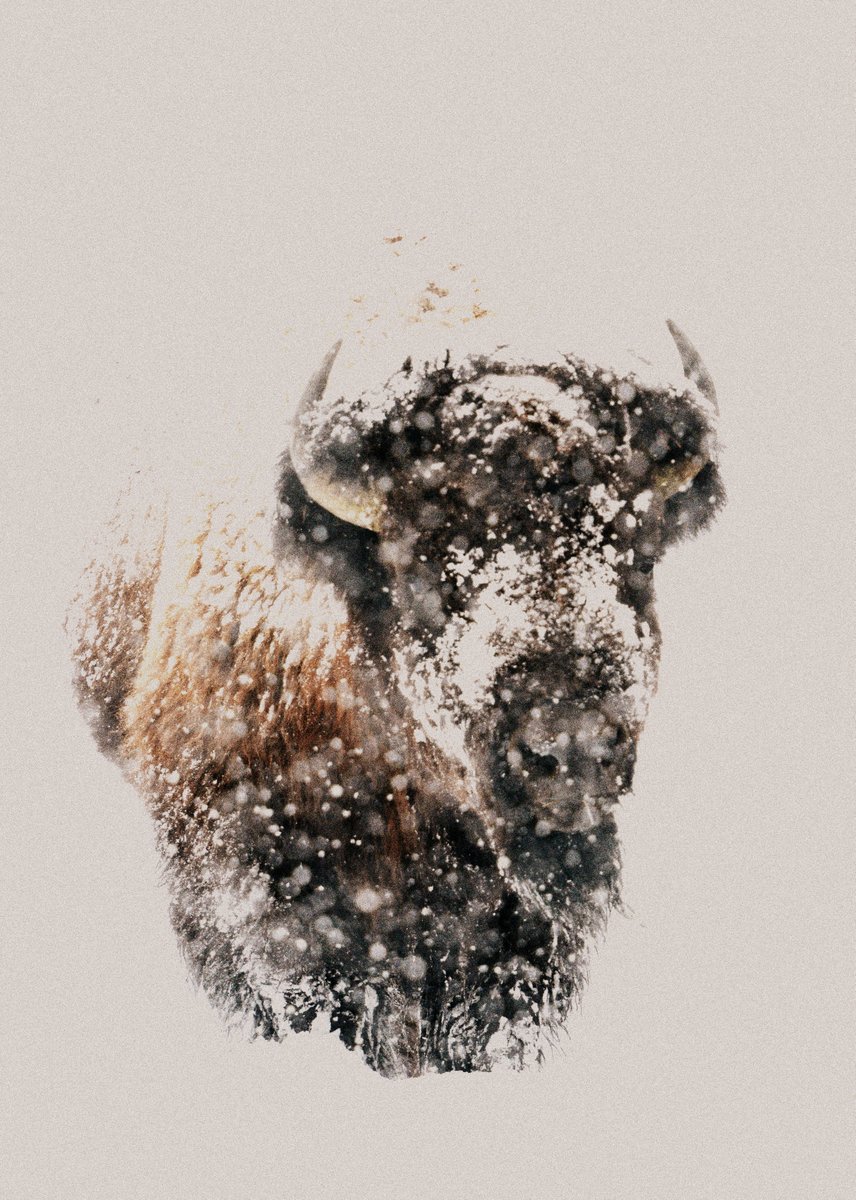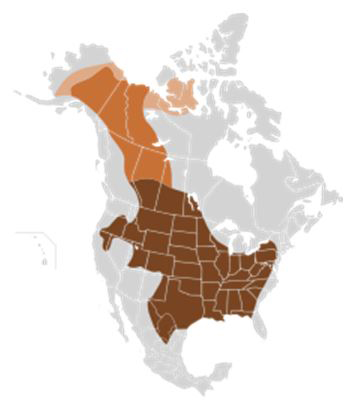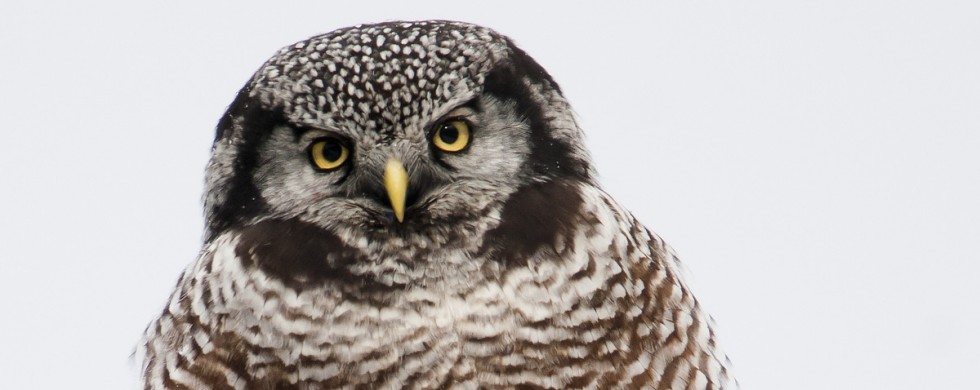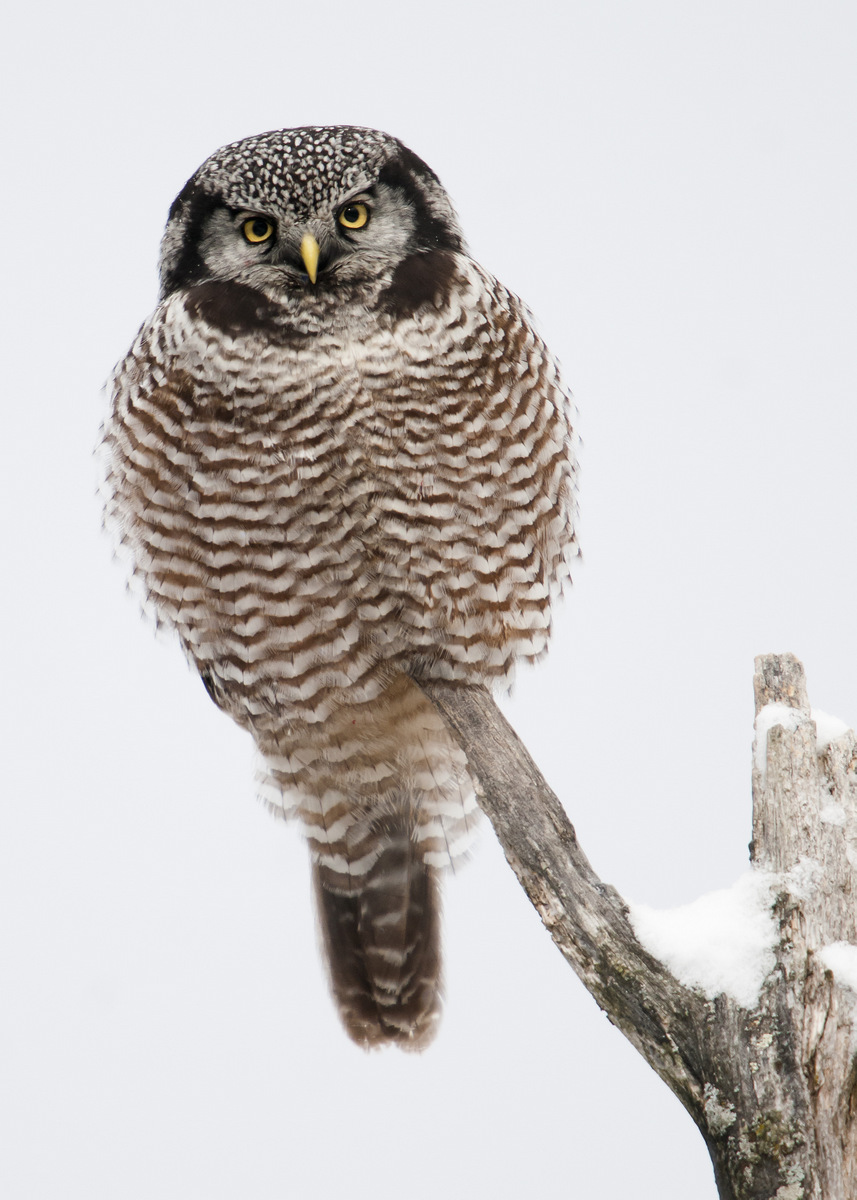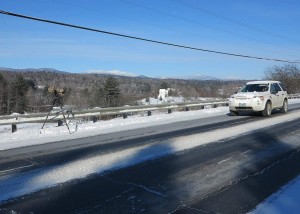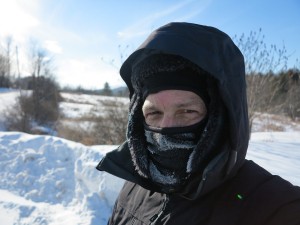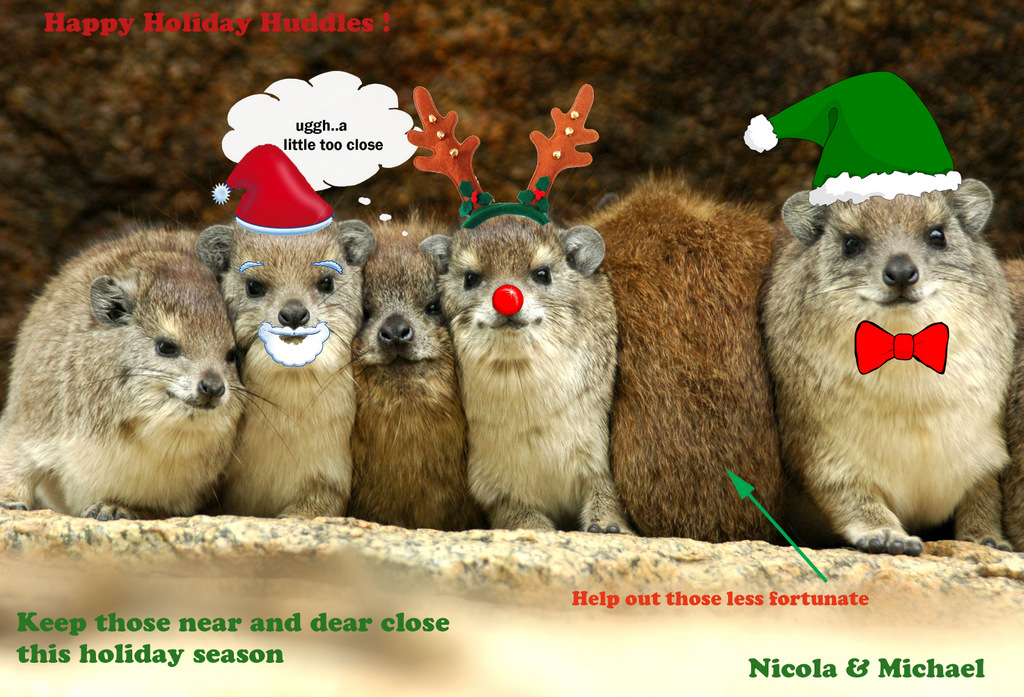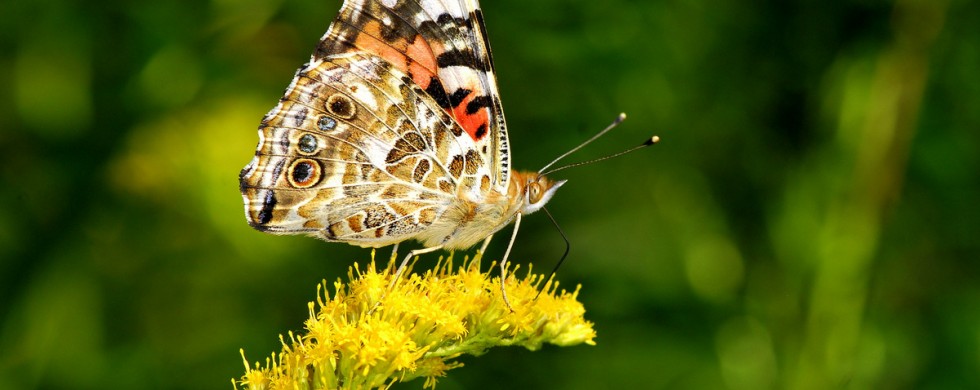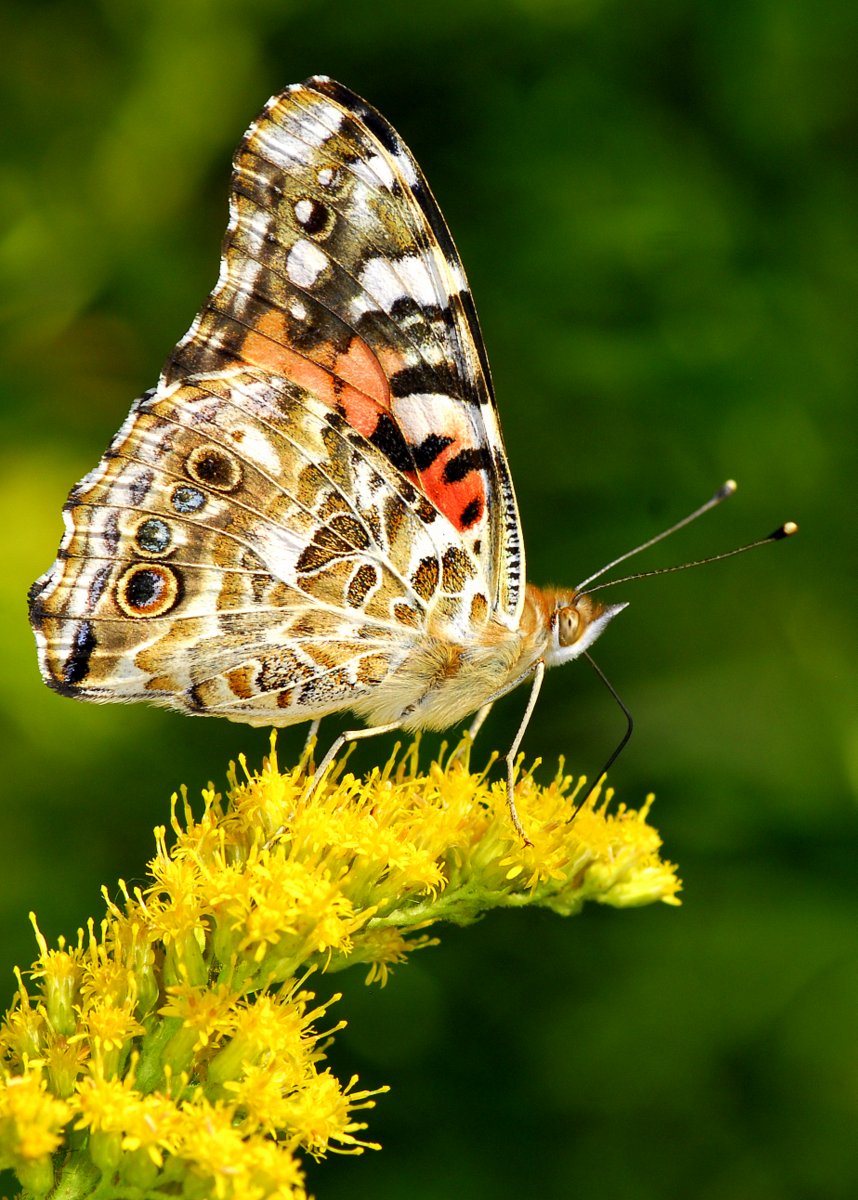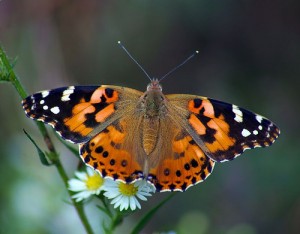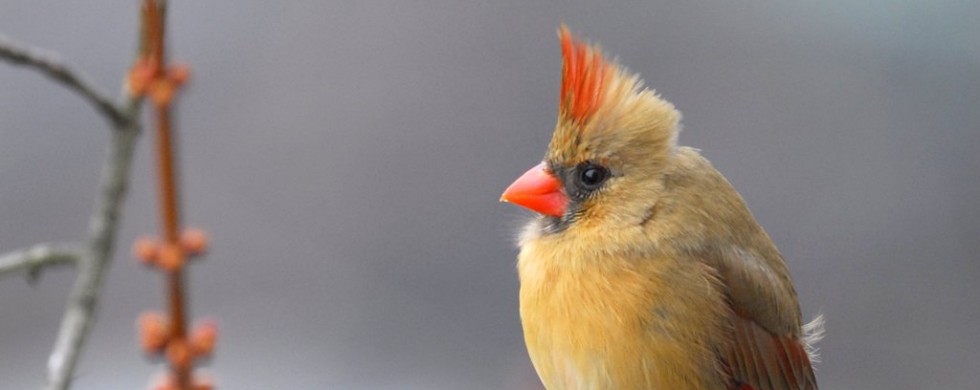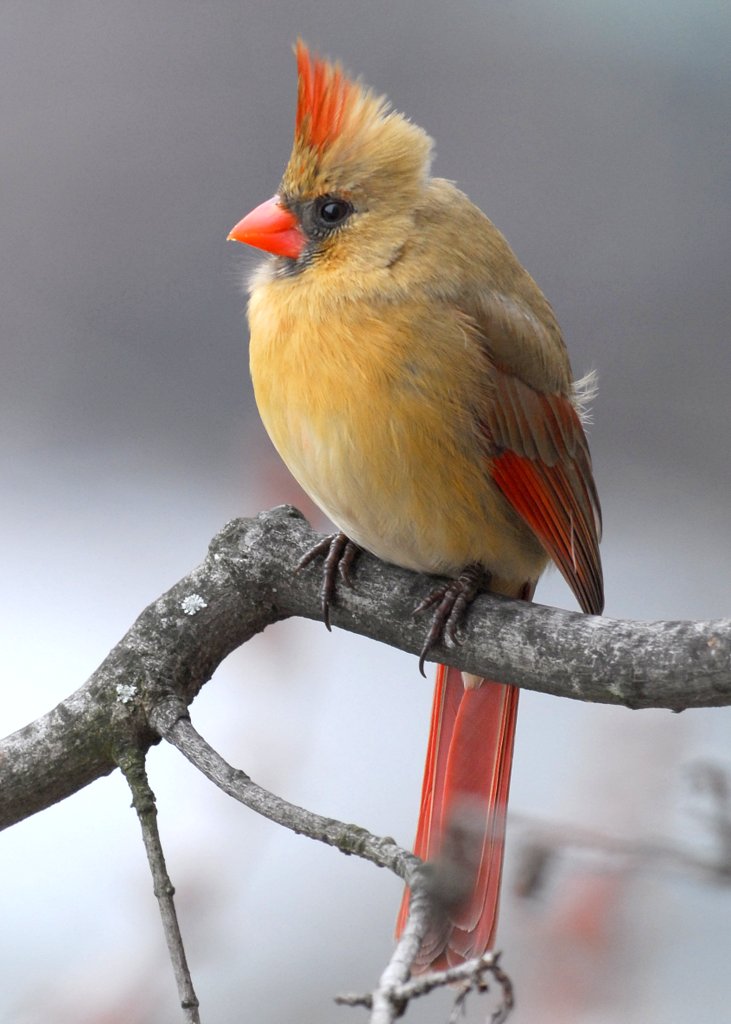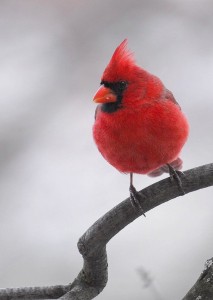31
Shot of the Month – January 2014
I had the good fortune to visit Yellowstone National Park a few weeks ago (January 2014). The dramatic landscape of mountains, rivers, and forests is painted in primary hues of white (the Snow!), much white; but also blue (the Sky!), green (the Trees!) and brown (the Wildlife!). I saw my first wild American Bison. You can’t fully appreciate how big these creatures are until one walks within 20 feet of you. The bison herds were one of our more constant companions. We saw them each day, often with their heads deep in the snow looking for a meal.
A bison herd at the base of a mountain along the bend in a river. Driving snow. Quick, someone call Norman Rockwell.
Once I got back I was looking forward to learning more about the bison and sharing some tidbits with a photo.
But then it went, less well.
In my research, I rediscovered those facts that I learned so dispassionately as a child. It went something like: There used to be lots of bison in the West. We killed most of them. The West was won and we became a great country.
This time, however, it was much more personal. Let’s go back to the killing part. There used to be at least 50,000,000 bison in North America. They may have been the most numerous large animal on earth.
Fifty million. F—i—f—t—y M—i—l—l—i—o—n.
Mull that over for a bit. As America rushed to “settle” the West in the 1800’s the bison were a nuisance. The onslaught began. The railroad companies didn’t like how the bison were causing delays to their trains and damaging their tracks. The companies ….” offered tourists the chance to shoot bison from the windows of their coaches, pausing only when they ran out of ammunition or the gun’s barrel became too hot.”
Bison killing contests were held. A Kansan set a record of killing 120 bison in 40 minutes. For mind-splitting irony, listen to the Kansas state song while you read on. “Buffalo” Bill Cody was hired to exterminate bison and managed to kill 4,000 in 2 years of effort. In just one winter (1872-73) the demand for bison hides in the East drove professional hunters to kill 1.5 million bison (source).
The US government actively promoted the extinction of the bison as a way to destroy the Plains Indians whose entire way of life was based on the food and materials provided by those herds. Troops were ordered to kill bison at will. In 1874 President Ulysses S. Grant vetoed a Federal bill to protect the dwindling bison herds. In 1875 General Philip Sheridan pleaded to a joint session of Congress to slaughter the remaining herds in order to defeat the Indians (source).
In less than 100 years the slaughter was complete.
By 1890 there were less than 1000 bison left. (Estimates range from 541 to 750 individuals)
The number of wild bison alive today is about 12,000. The largest wild herd in the US is found in Yellowstone and includes about 4,000 animals.
You may have heard that there are 500,000 bison and while that number is correct, don’t be overjoyed. Other than those 12,000 all the rest are raised in private commercial farms like cows and have often been crossbred with cattle.
I photographed the bison above during a heavy snowfall. I have brightened the image to cause the snow to consume the bison around the edges. I added grain to the image to give the sense of looking at an old photo of a time long past. I don’t want you to see the true bison because it doesn’t exist anymore. Only a notion of that creature remains. The bison that was, a member of a herd that covered a continent, is no more. We worked really hard to scratch that animal out of the American landscape and no park, no matter how magnificent it is, can make that right again.
I am not sure which is more powerful, my sadness or my rage, over what we did to this amazing creature. Or, over what it says about my species.

